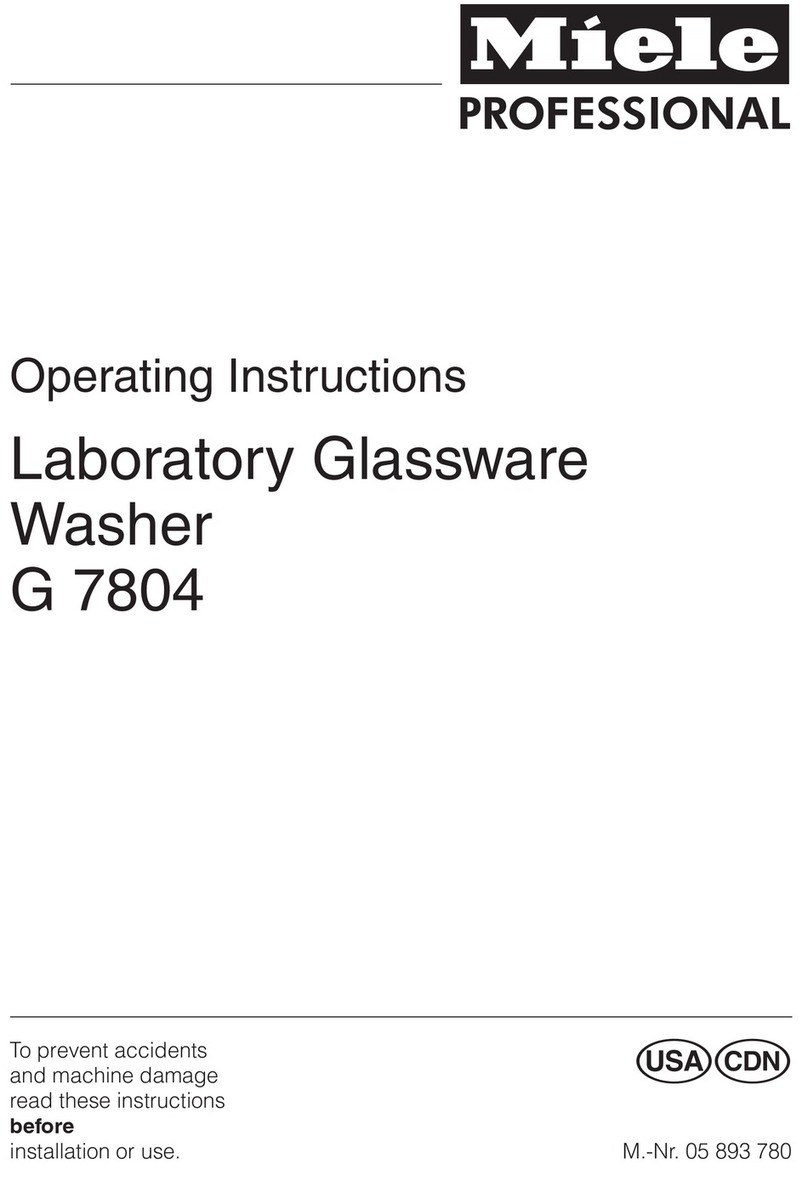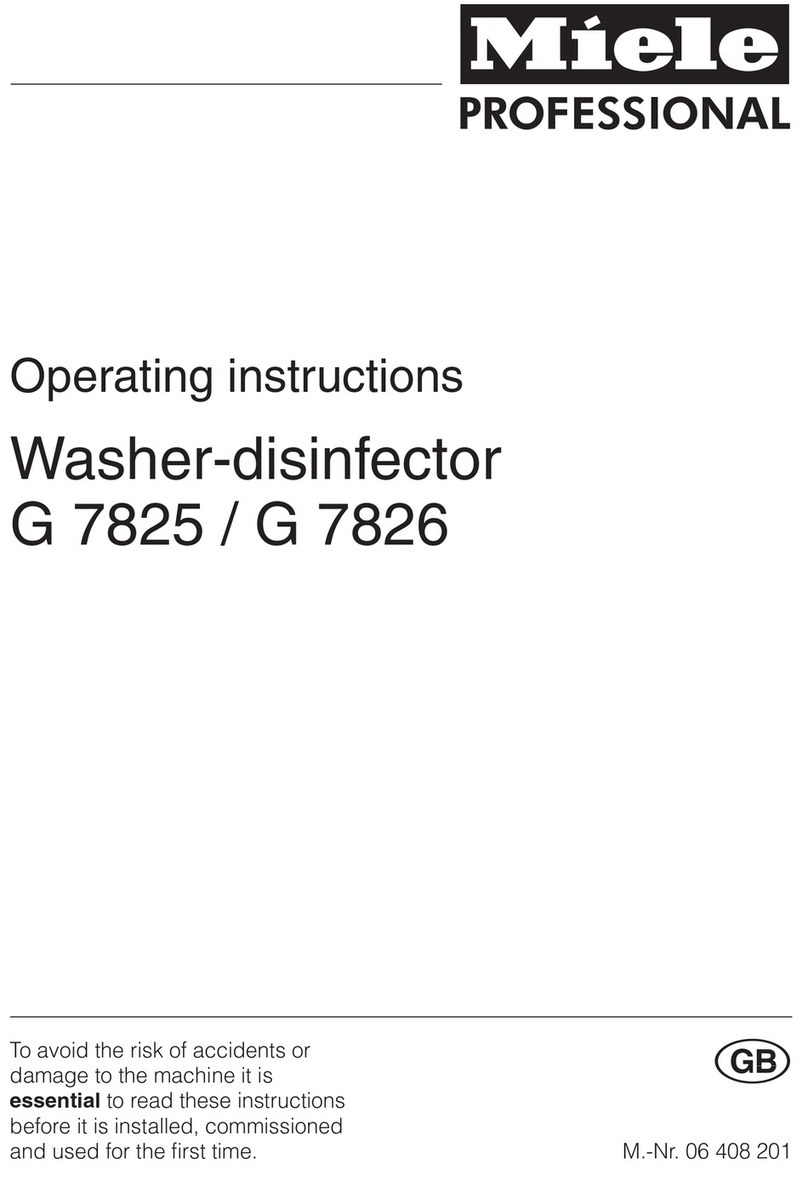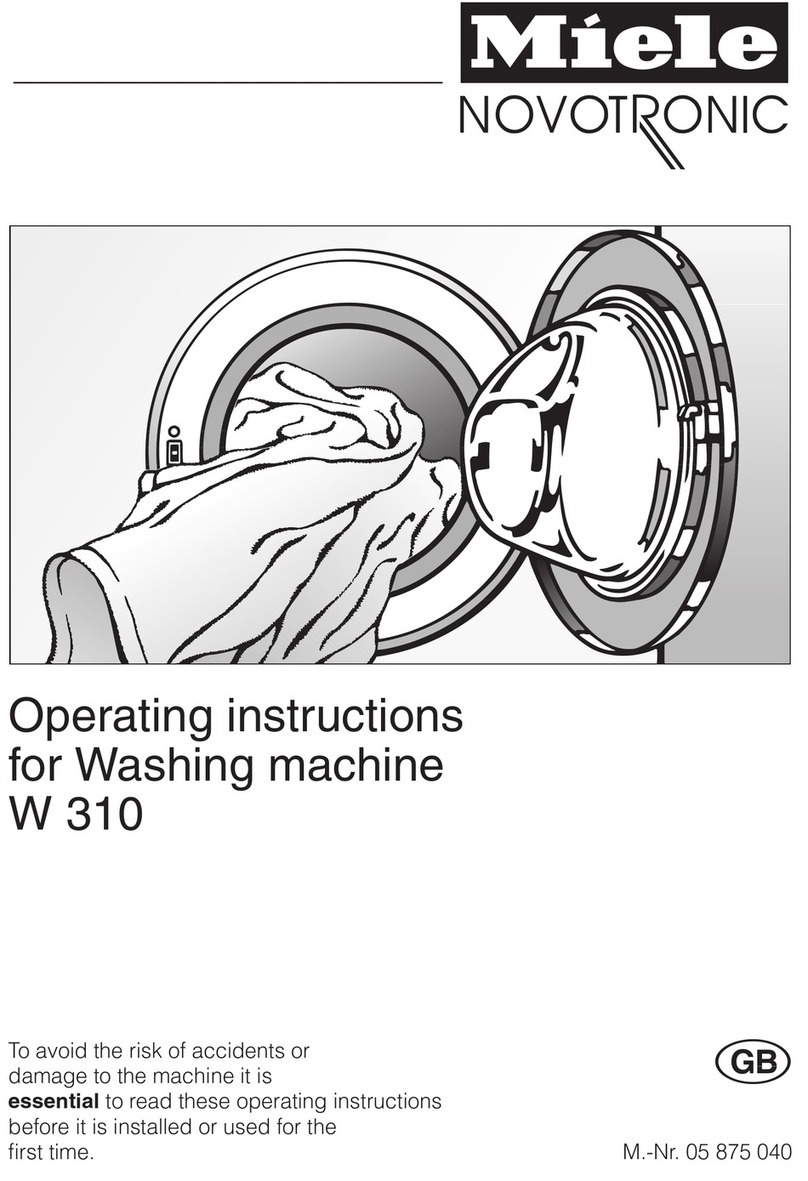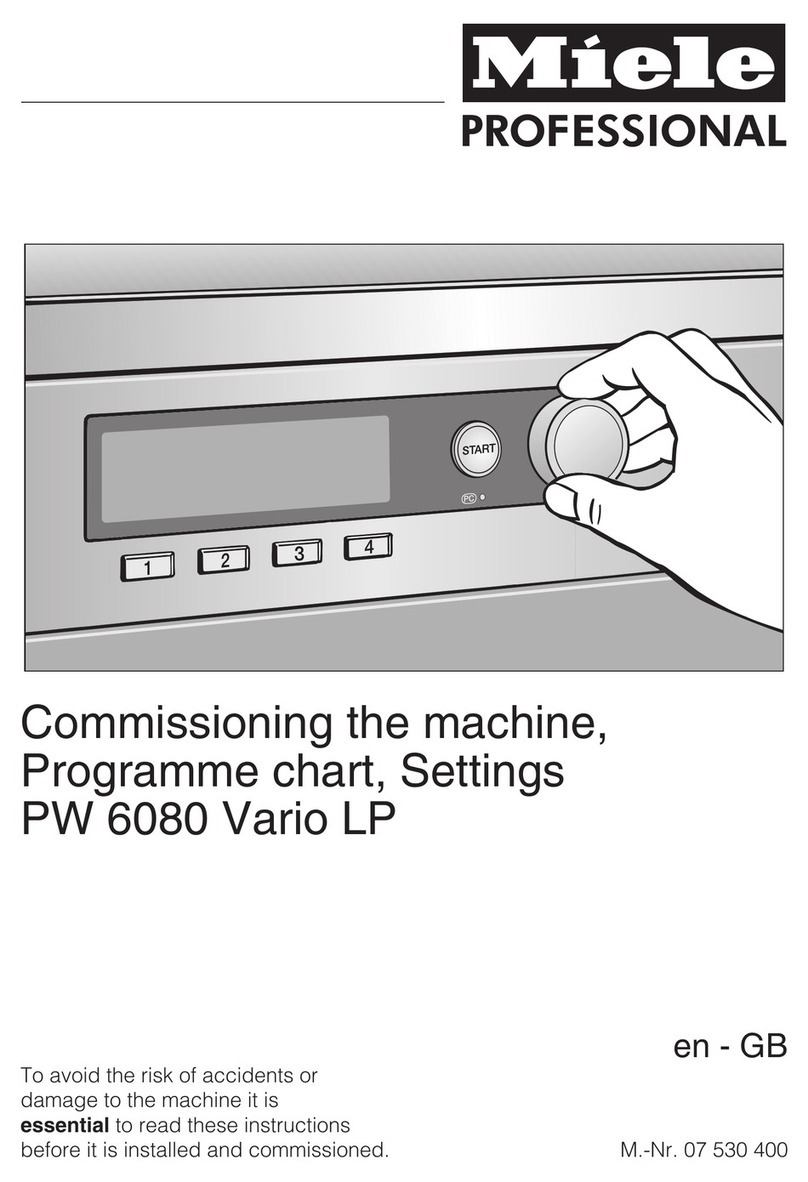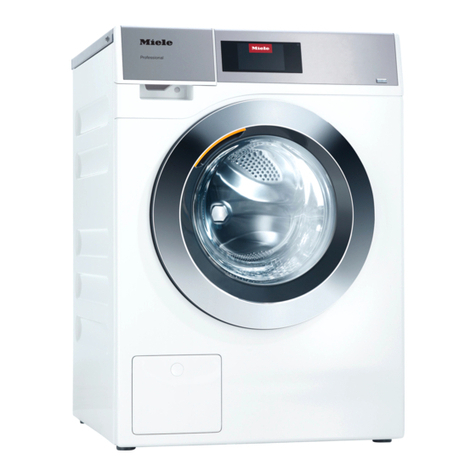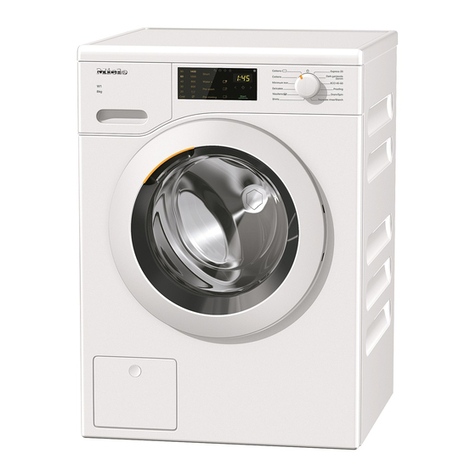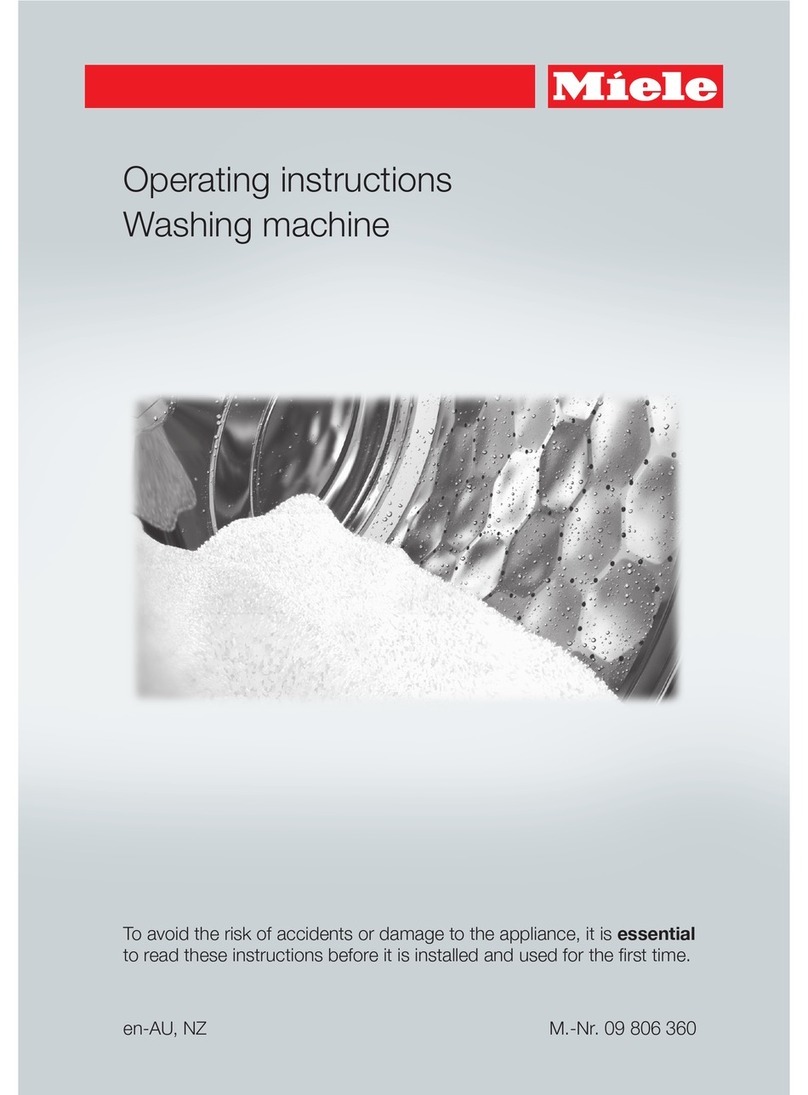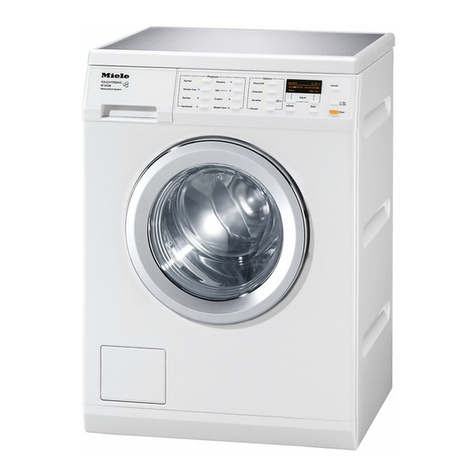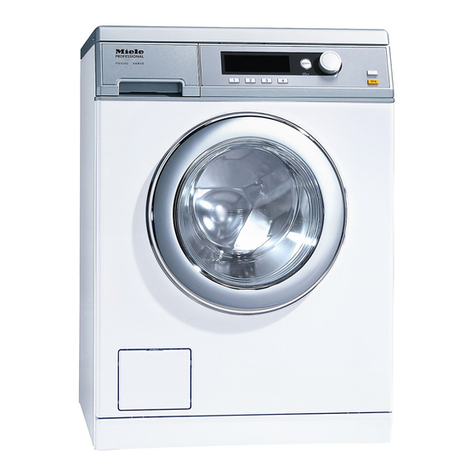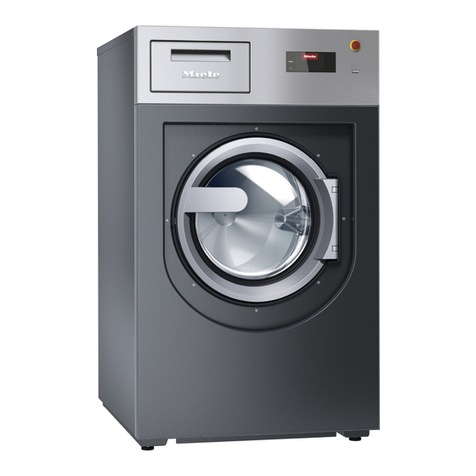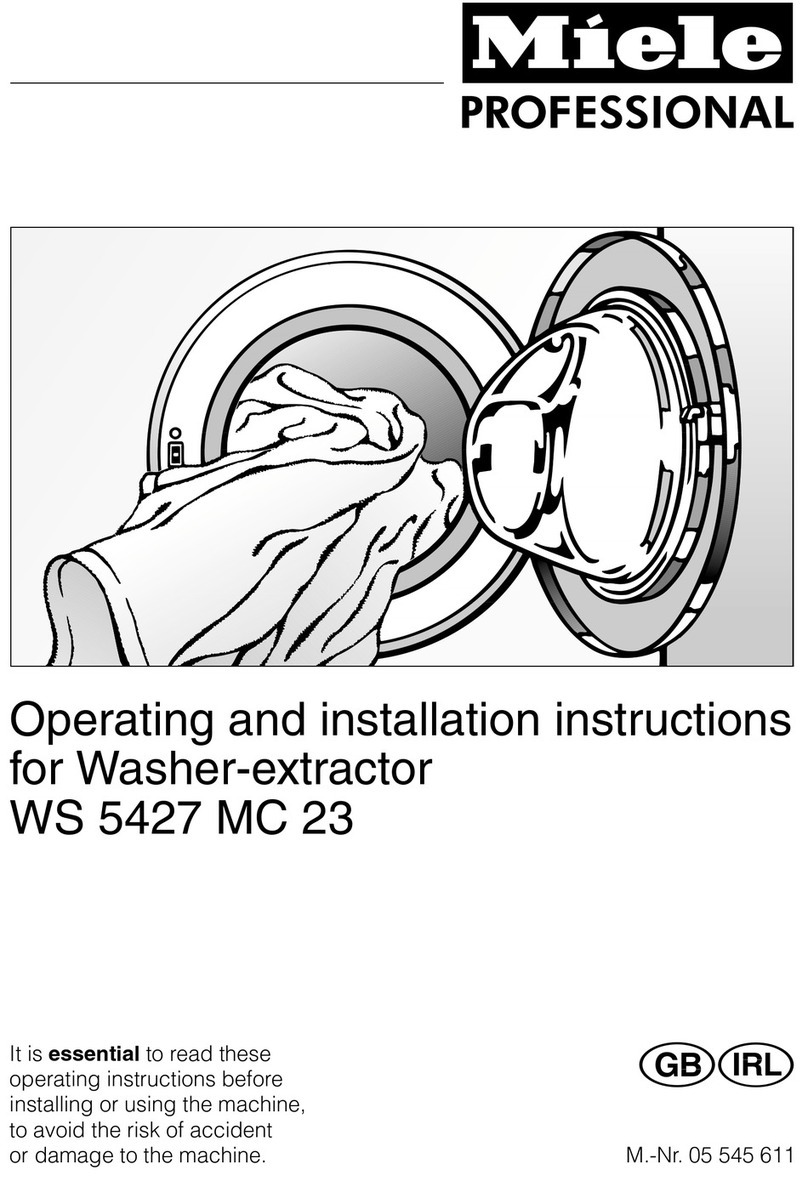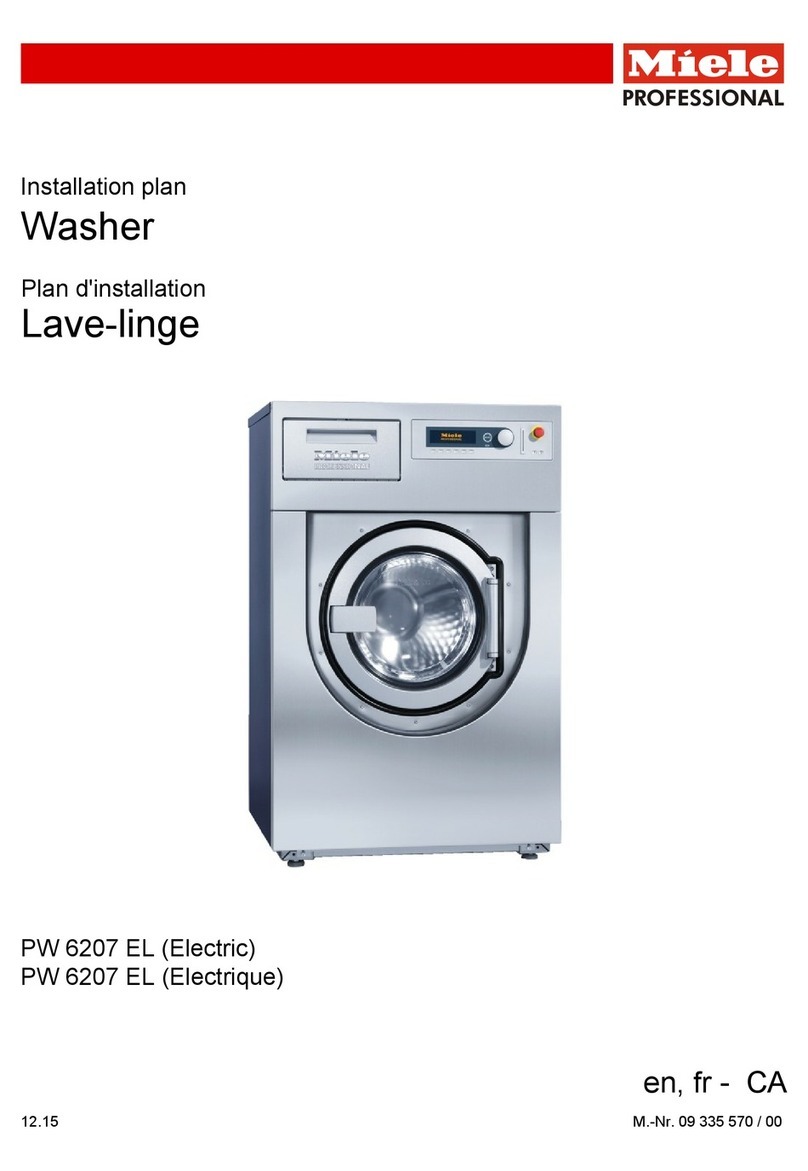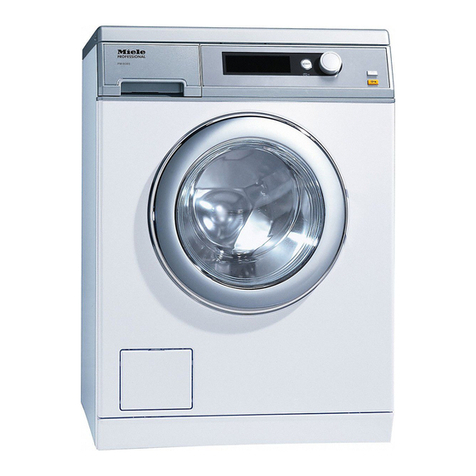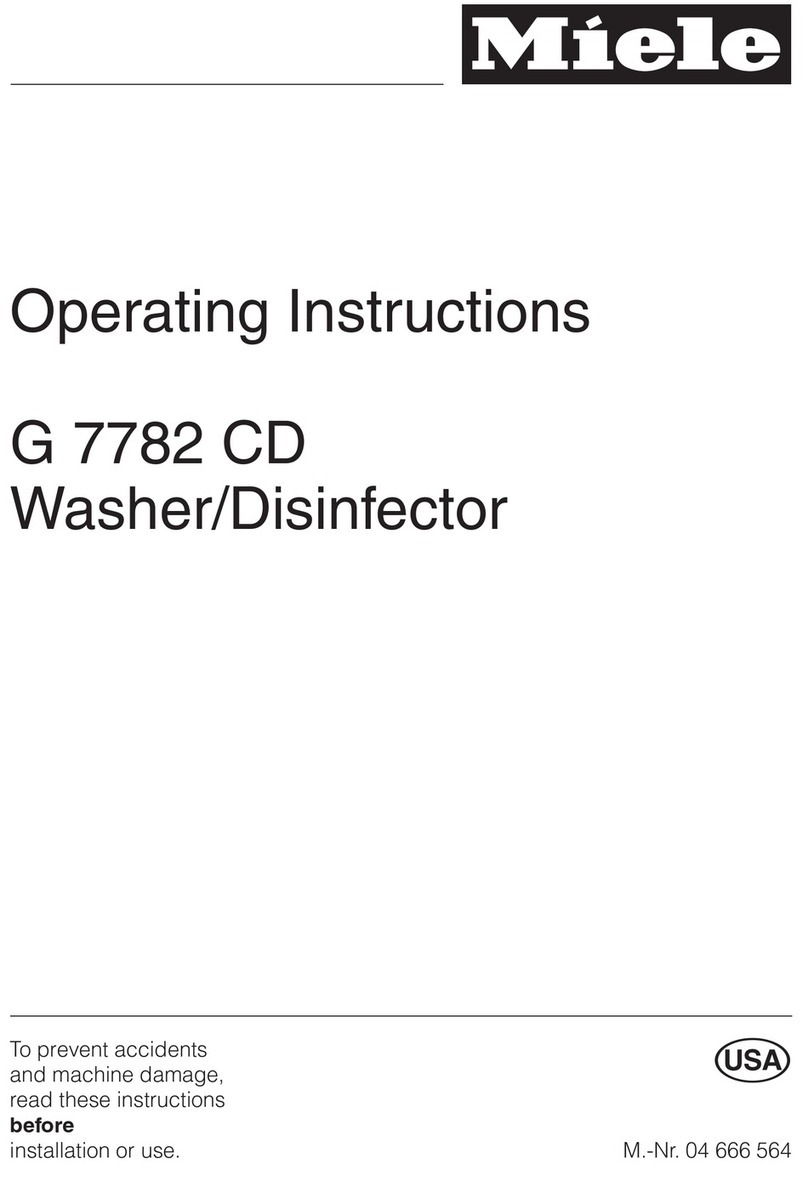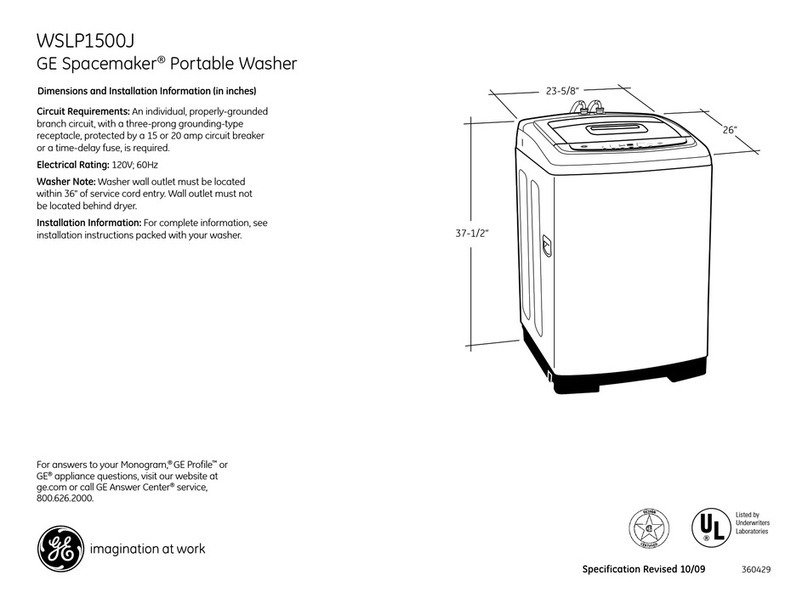Important safety instructions
WARNING – To reduce the risk of
fire, electric shock, or injury to per-
sons when using your appliance, fol-
low basic precautions, including the
following:
1. Read all instructions before using
the appliance.
2. Do not wash articles that have
been previously cleaned in,
washed in, soaked in, or spotted
in gasoline, dry-cleaning solvents,
other flammable or explosive sub-
stances as they give off vapors
that could ignite or explode.
3. Do not allow children to play on the
appliance. Close supervision of
children is necessary when the ap-
pliance is used near children.
4. Before the appliance is removed
from service or discarded, remove
the door to the washing compart-
ment.
5. Do not reach into the appliance if
the drum is moving.
6. Do not install or store this ap-
pliance where it will be exposed
to the weather.
7. Do not tamper with controls.
8. Do not repair or replace any part of
the appliance or attempt any ser-
vicing unless specifically recom-
mended in the user-maintenance
instructions or in published user
repair instructions that you under-
stand and have the skills to carry
out.
9. Do not add gasoline, dry-cleaning
solvents, or other flammable or ex-
plosive substances to the wash
water. These substances give off
vapors that could ignite or ex-
plode.
10. Under certain conditions, hy-
drogen gas may be produced in a
hot water system that has not
been used for 2 weeks or more.
HYDROGEN GAS IS EXPLOSIVE.
If the hot water system has not
been used for such a period, be-
fore using the washing machine,
turn on all hot water faucets and
let the water flow from each for
several minutes. This will release
any accumulated hydrogen gas.
As the gas is flammable, do not
smoke or use an open flame dur-
ing this time.
SAVE THESE INSTRUCTIONS
Refer to the Electrical Connection
Section for Grounding on installa-
tion instructions.
Important safety instructions
5

